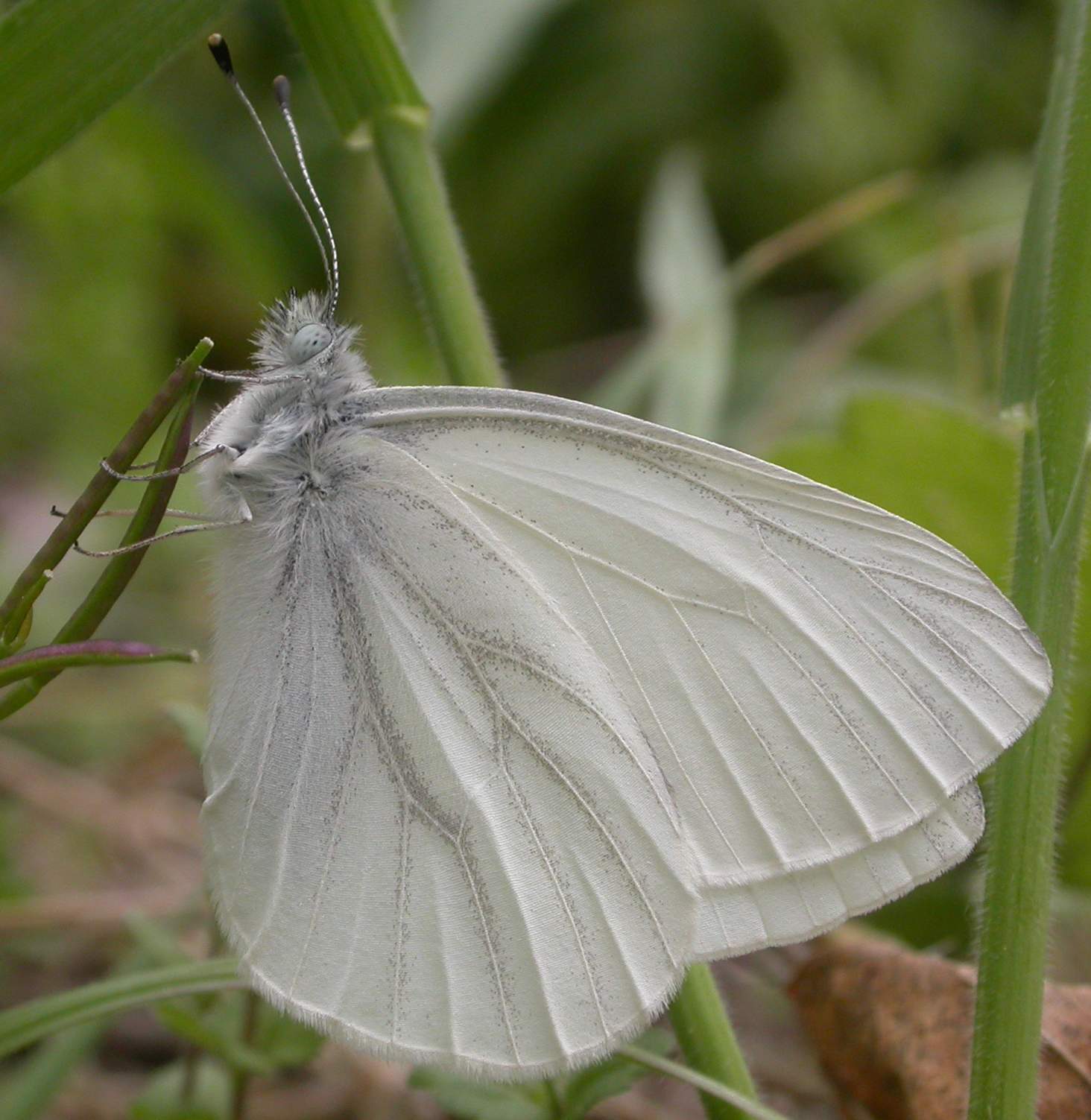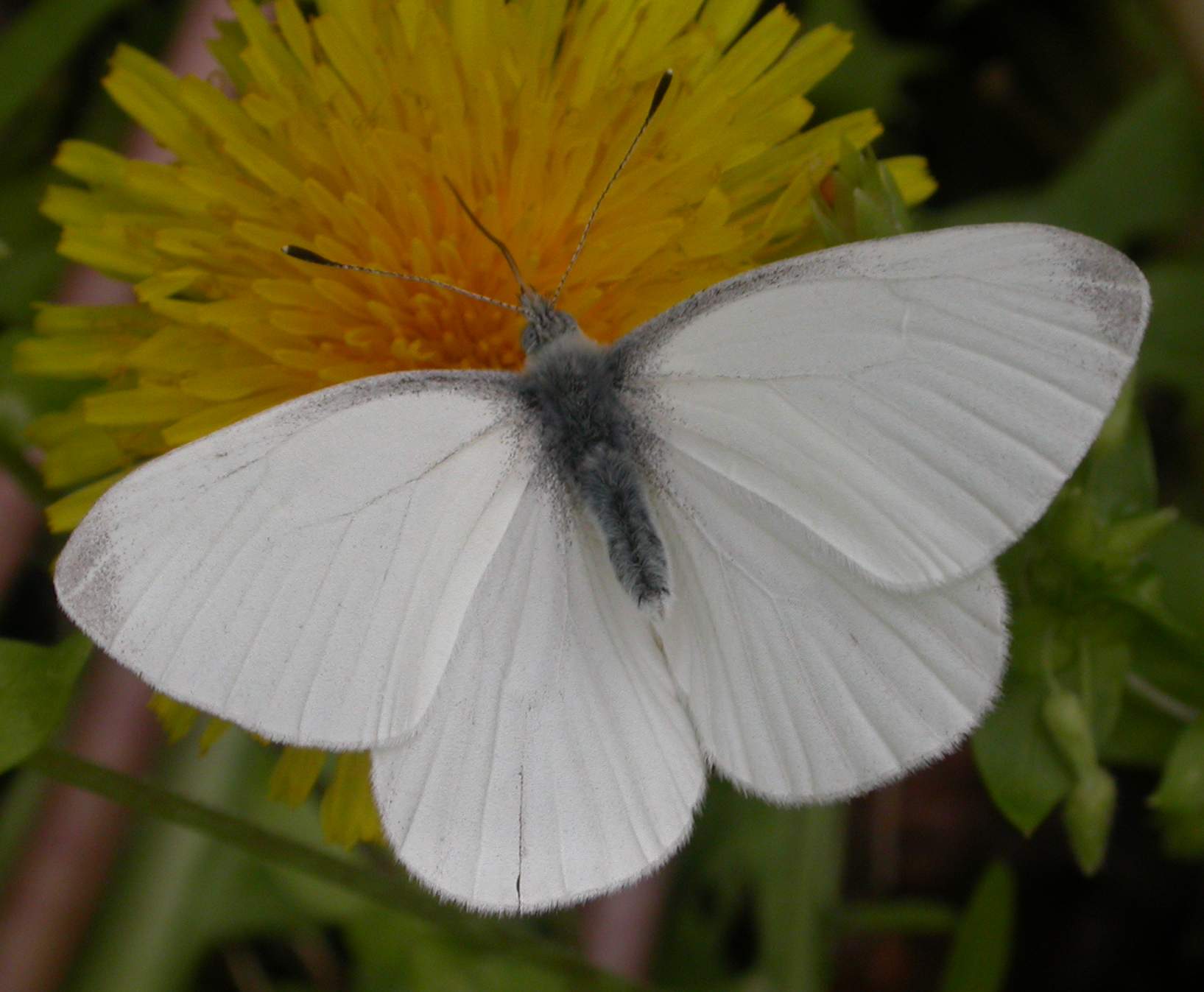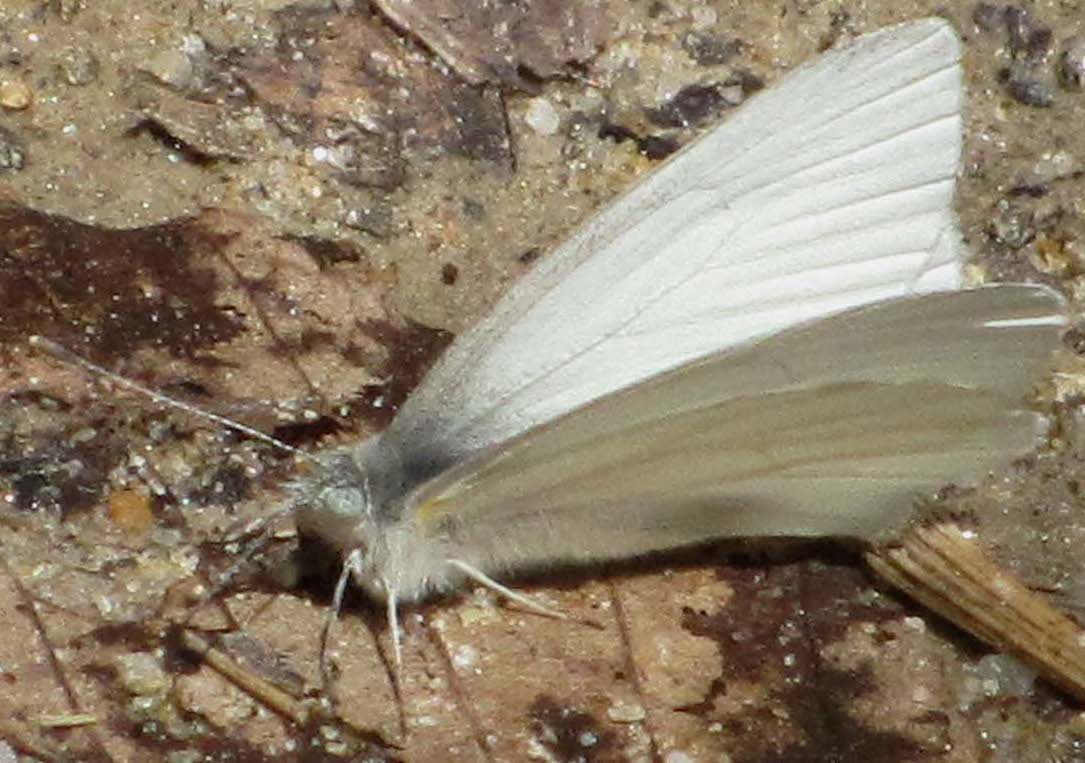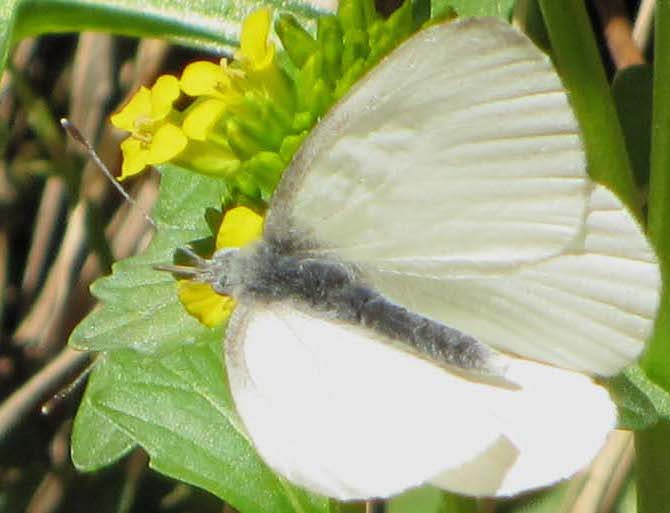|
| Common Name | West Virginia White by Roger Rittmaster
[View PDF]
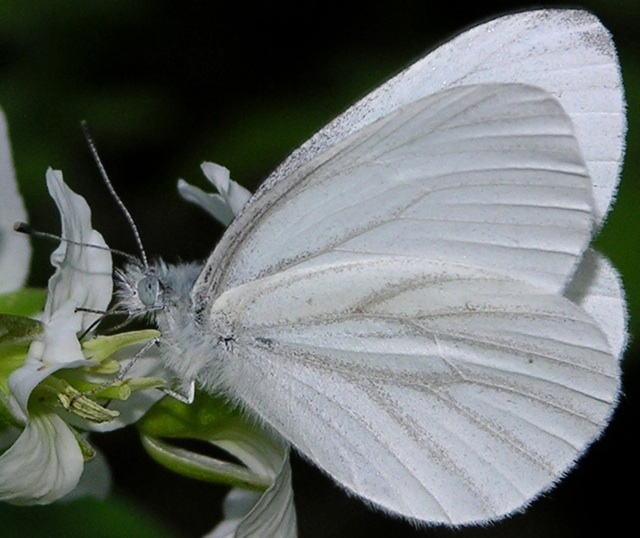 Click to enlarge Click to enlarge
[Google Images] GBIF [Global Distribution ] BoA [Images ] iNaturalist |
| Scientific Name | Pieris virginiensis
|
| Link to BAMONA species account. |
| Map | Click on a county for list of all database records for the species in that county.
 |
| Distribution | DISTRIBUTION: Restricted to the Mountains (and the South Mountains in the Piedmont foothills), where found from low elevations (below 2000 feet in Polk County) to over 4000 feet (Macon County) and where recorded from all but one county.
|
| Abundance | ABUNDANCE: Fairly common to common, at least locally, in the southern and central Mountains. It is much less numerous, and generally uncommon, in the northern Mountains. It seems to be genuinely rare near the VA border, where still not yet recorded from Alleghany County and seldom found (despite much field work) in Ashe County.
|
| Flight | FLIGHT PERIOD: Single-brooded, with a moderately narrow flight period: late March (rarely in mid-March) to late May, very rarely to early June.
|
| Habitat | HABITAT: Restricted to rich forested slopes, being characteristic of cove forests, where there is an abundance of wildflowers and a scarcity of shrubs. Usually seen in the dappled shade of forest interiors, but seen at times along roads and other small openings in these forests.
|
|
| | Plants | FOOD AND NECTAR PLANTS: Toothworts (Cardamine spp.) are the usual foodplants; these are common in the Mountains, as well as in the Piedmont, but the butterfly is not known from the latter province, except in the South Mountains. The species nectars on toothworts as well as other cove-forest wildflowers.
|
| Comments | COMMENTS: This species is easily seen where and when present; white butterflies are easily detected well upslope or downslope in the open cove forests, and nearly all whites in this habitat are this species. This is a slow-flying butterfly and is easily tracked down, if the observer is willing to traverse the often steep slopes where this butterfly occurs. When you are looking at spring wildflowers in late April or early May in mountain coves such as Joyce Kilmer Memorial Forest and Great Smoky Mountains National Park, West Virginia Whites can be the most frequently seen butterfly species.
The Cabbage White is occasionally seen in cove forests. Thus, you cannot assume that a "white" in such a habitat is a West Virginia White.
This species has undergone alarming declines in the northern and central Appalachians, due mainly to the presence of the non-native Garlic Mustard (Alliaria petiolata), which grows in rich woods and is poisonous/lethal to caterpillars of the butterfly. Whether the butterfly has always been scarce in the northern Mountains of NC, or whether it was formerly more common and has declined due to the presence of the Garlic Mustard, is not known. However, this plant does occur in the northern Mountain counties and might be a concern to the butterfly species in NC in the future. Note that in recent years, NatureServe has elevated the Global Rank to an alarming G2G3; but as the population in NC seems relatively stable and not at all scarce in many areas, the State Rank has remained at S3S4, which is at odds with the Global Rank.
|
State Rank | S3S4 | | State Status | |
Global Rank | G2G3 [G3G4] | | Federal Status | |
| Synonym |
|
| Other Name |
|
|
|

 >>
>>